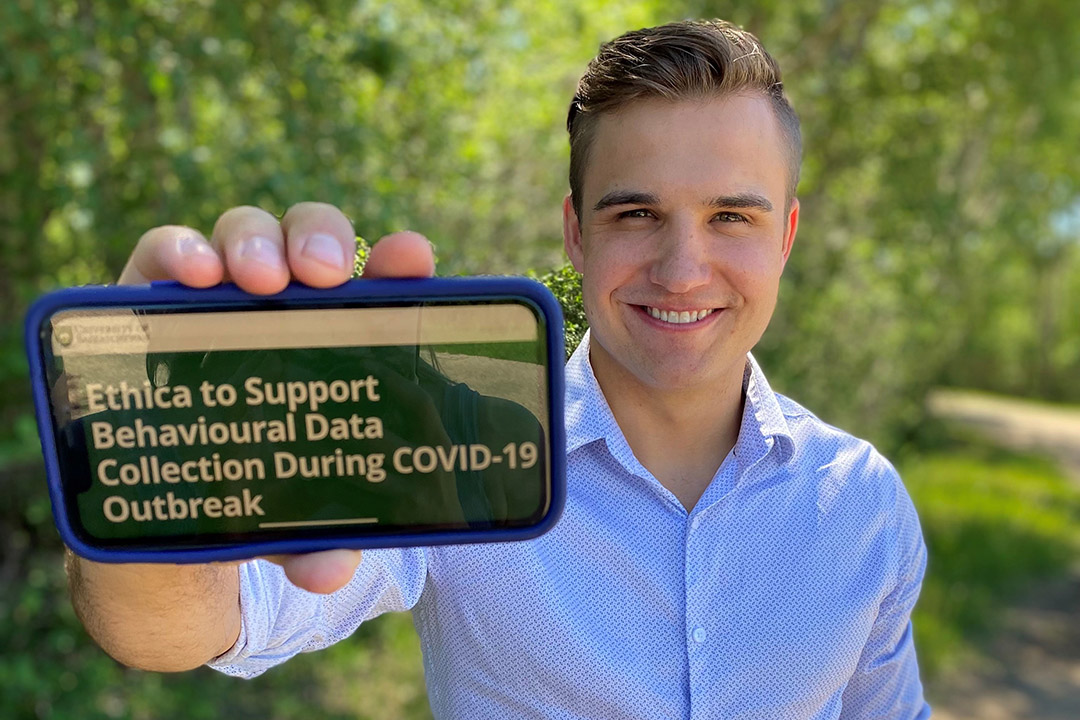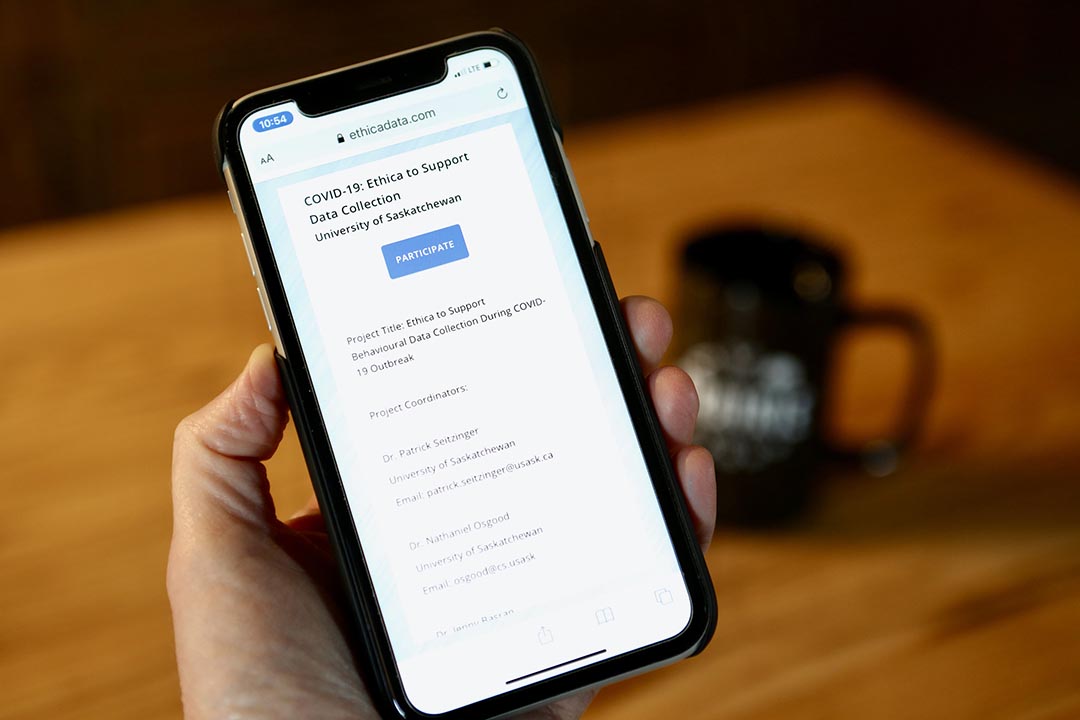
Smartphone survey to collect Saskatchewan residents’ perception of COVID-19
SASKATOON – Saskatchewan residents can give input about COVID-19 public health measures by using their smartphones to respond to a series of five-minute surveys.
By Nykole KingIt’s part of a new study launched by University of Saskatchewan (USask) researchers who want to understand people’s thoughts about the effectiveness of public health messaging and the perceived risk of COVID-19 in their lives over the next four months.
“We’re really trying to capture the public's voice and their viewpoints when it comes to the COVID-19 outbreak. As public health researchers and practitioners, we aim to create public health messages and guidelines that are evidence based. The other big piece is the public's understanding—making sure that our messaging isn't just accurate, but that it's also effective,” said Dr. Patrick Seitzinger (MD, MPH), a physician and USask School of Public Health graduate.
“This study is about trying to capture data on people’s perspectives, viewpoints and behaviours to see if the evolving strategies are effective and how they can be improved.”

Dr. Jenny Basran (MD) of the USask College of Medicine leads the multidisciplinary study that includes Seitzinger, Western College of Veterinary Medicine researcher Dr. Cheryl Waldner (DVM, PhD), and computer scientist Dr. Nathaniel Osgood (PhD) from the USask College of Arts and Science.
This project leverages USask’s expertise in public health and disease modelling. Results will help to guide the province’s public health strategies for the COVID-19 pandemic and future outbreaks.
Whenever they have time, participants can complete the simple surveys through the Ethica smartphone app—an end-to-end research platform created by members of Osgood’s computer science team.
This unique study combines self-reporting surveys and GPS data into one project, said Seitzinger. If users enable the location data feature, GPS data will help researchers understand the population’s trends and their patterns of mobility across the province.
“The location information can provide a lot of context about the risk of disease spread without being invasive,” said Waldner. “It is not about tracking individuals and seeing where each individual is going—it’s about how movement patterns are changing over time.”
While Waldner primarily studies antimicrobial resistance, she has a public health background and has worked on infectious disease modelling for the 2009 H1N1 influenza pandemic and the COVID-19 pandemic.
“I work in a lot of different areas, but the theme that ties all of it together is tools to inform decision-making around population health,” said Waldner. In a previous project, she and Seitzinger collaborated with Osgood to adapt the smartphone tool for studying foodborne infectious disease.
Participants' responses will help researchers create predictive models and to inform public health strategies and messaging. Although USask researchers are conducting this project independently, they will share findings with Saskatchewan’s public health practitioners.
“I realize that the viewpoints of the public are diverse,” said Seitzinger. “To me, it's really necessary to understand what's going on in the minds of the people across Saskatchewan so that we can make sure that our public health strategies align with the specific needs of the population.”
Any Saskatchewan adult who has access to a smartphone or computer with internet access can join the study, which will be open between June and October 2021. Participants will initially complete one very short survey per day for the study’s first five days to collect baseline information on risk perceptions, behaviours and knowledge about COVID-19.
In subsequent weeks, participants will complete two mini-surveys to gauge any changes in mask use practices, social contacts and COVID-19 vaccination viewpoints. If participants experience COVID-related symptoms, the surveys will also seek to understand the respondents’ experience with the illness and any long-term health effects.
The researchers plan to publish their findings in an academic journal and share results with Saskatchewan residents. The project is financially supported by USask.
Visit the research project’s web site to learn how to participate in the study.
-30-
For more information, contact:
Victoria Dinh
Media Relations Specialist
University of Saskatchewan
victoria.dinh@usask.ca
306-966-5487

